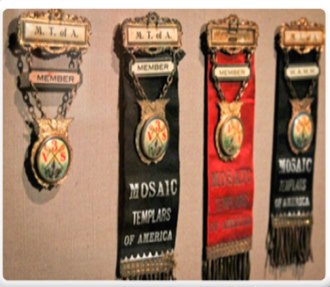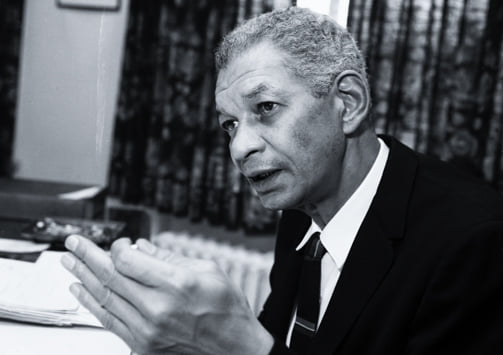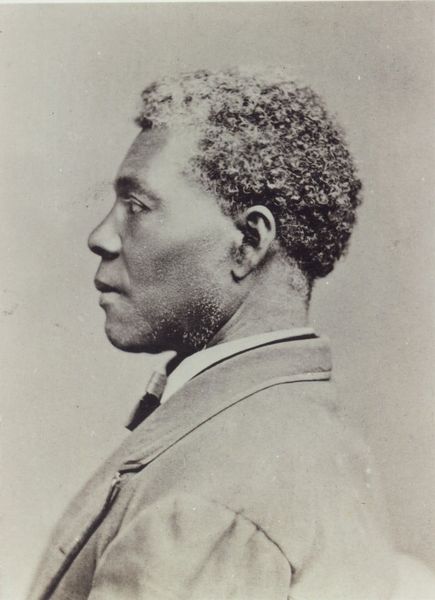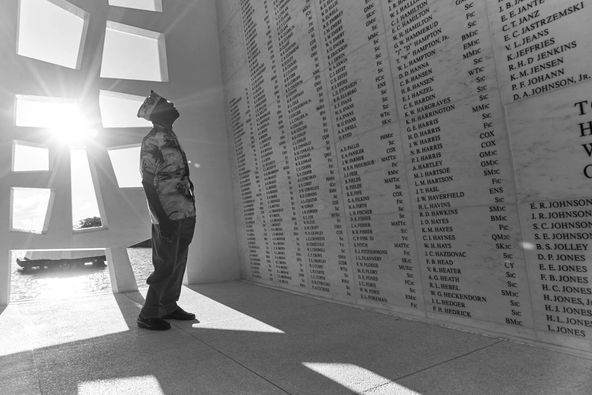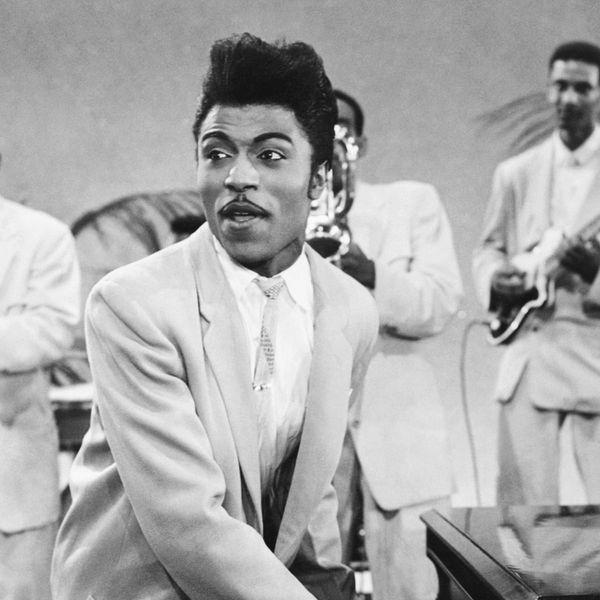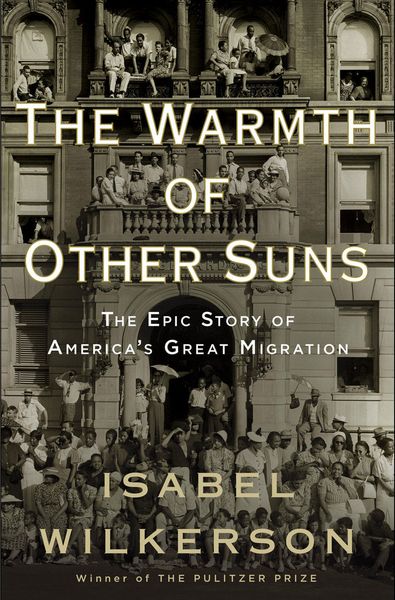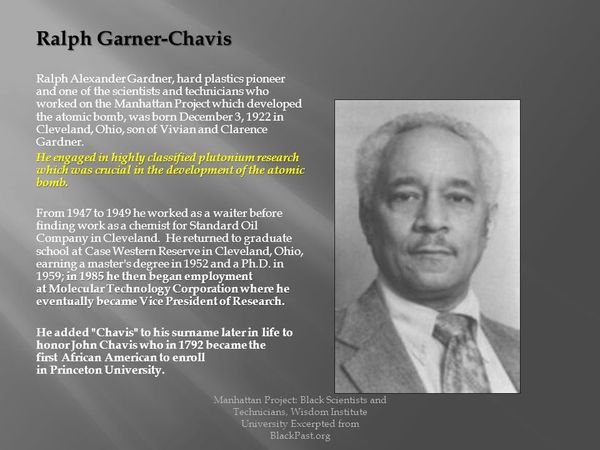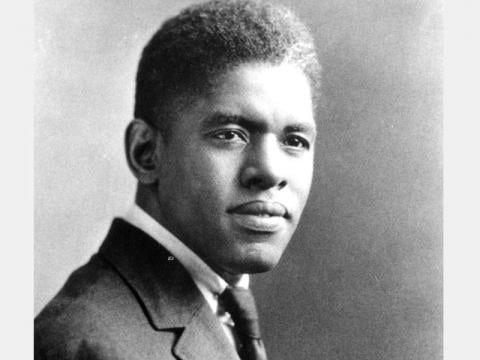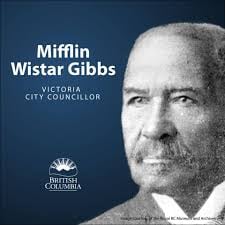GM – FBF – Today’s American Champion was a chairman of the Republican Party in Arkansas, rose from poverty to national prominence when he co-founded the Mosaic Templars of America (MTA), an African-American fraternal organization of international scope, spanning twenty-six states and six foreign countries from the 1880s until the 1930s.Headquartered in Little Rock (Pulaski County), MTA became one of the largest and most successful black-owned business enterprises in the nation and the world; it included an insurance company, a building and loan association, a hospital, a business college, a publishing house, and a nursing school.Living most of his early life in the downtown 9th Street district of Little Rock, Bush was widely acknowledged as one of the wealthiest black men in Arkansas and a progenitor of the economic development and progress of black American entrepreneurs.Today in our History, December 11, 1916 – John Edward Bush, died.John Edward Bush was born enslaved on November 14, 1856, in Moscow, Tennessee. In 1862, Bush and his mother and sister werebrought to Arkansas by their owner, who was trying to stay ahead of Union troops. Bush and his family were free at the end ofthe Civil War, but his mother died shortly after their arrival in Little Rock. Bush rose from poverty to national prominence whenhe co-founded the Mosaic Templars of America (MTA), an African-American fraternal organization of international scope.Headquartered in Little Rock, AR, MTA became one of the largest and most successful black-owned business enterprises in thenation and the world. Bush was widely acknowledged as one of the wealthiest black men in Arkansas and a pioneer of the economicdevelopment and progress of black American entrepreneurs.In 1875, Bush worked as a postal clerk for the Railway Mail Serviceand became the first black person to be recommended for the chief clerkship of the division. Bush graduated with honors fromthe Capital Hill City School of Little Rock in 1876 and served as its principal for two years immediately following graduation.Bush served as an executive committee member of Booker T. Washington’s National Negro Business League, and Bush was a dues-payingmember of the Mosaic Templars. President William McKinley appointed Bush as the receiver of the U.S. Land Office at LittleRock in 1898.He was subsequently reappointed for four additional terms by Presidents Theodore Roosevelt and William HowardTaft. Bush died on December 11, 1916.After Bush’s death, his son Chester succeeded him as the national grand secretary of theMosaic Templars of America, while Aldridge served as secretary and treasurer of its monument department. Research more about this great American Champion and share it with your babies. Make it a champion day!
Author: Herry Chouhan
GM – FBF – Today’s American Champion was taken by his parents at the age of two years to Albany, Ohio, where unusual school facilities were offered African-American children.
GM – FBF – Today’s American Champion was taken by his parents at the age of two years to Albany, Ohio, where unusual school facilities were offered African-American children. When he was old enough, he was sent to the Albany public schools, and when the Albany Enterprise Academy, a school for African-American children, was erected, he was able to attend it for a short time. Unfortunately, his father died in 1870 and young Berry was compelled, at the age of sixteen, to leave school and help provide for his family, in which there were eight children younger than himself. Today in our History – December 10, 1854 – Edwin C. Berry (1854-1931) is born. He will become an American hotelier who was among the most successful African-American hoteliers in the country during his era. In his search for work he walked ten miles to Athens, Ohio, and was very happy to secure work in a brick yard at fifty cents a day. In a short time, his work improved until he was earning $1.25 a day, the greater part of which he was able to divide with his family. He was never too proud to do any kind of honest labor, and although his work was hard and not inviting, it was the best he could do, and he decided to do it well. During the summers he remained at the brick yard, and in the winters was usually able to find employment in stores or elsewhere as a delivery boy or clerk. It was during these difficult years that he learned to practice economy. He did not use tobacco or intoxicants; because he could not afford them then. He said he was not able to afford them afterward, either.He also learned to seize opportunities which other boys allowed to slip by them. Whenever a circus came to town the other boys eagerly spent some of their hard earned money to see the show, but young Berry turned the circus to profit.He would rig up a refreshment booth and thus make more money than he would had he stayed at the brick yard. Whenever there were excursions, that form of extravagance in which so many of our people sink their savings, Berry would always get the privilege of selling refreshments on the train, thus enjoying the excursion and making a profit at the same time. Speaking of economy, he said once that on many occasions he has walked ten miles to his home so that he might have an additional twenty-five cents for the dear ones there. While he was working at the brick yard, it was his custom to work every day and half the night, thus making the week nine days long.On rainy days when the brick yard was idle he would find some chores to do, or go to the country after cream for the ice cream makers. The first winter after the death of his father he worked at hauling bricks until his hands were cut to the quick by handling the rough surfaces. He was more than rewarded, however, by earning enough to take home four barrels of flour which were all paid for, at $7.80 per barrel. His first indoor work was in Parkersburg, West Virginia, where he was employed as errand boy in a dry goods store at $10 per month. Of this amount he regularly sent his mother $8 every month. It was in Parkersburg that he first secured work along the line in which he was afterwards to make so great a success. He got work in an ice cream parlor, where he served as a waiter. Returning to Athens, he secured employment in a restaurant, where he picked up the profession of catering. He soon became so proficient in this profession that he became personally in demand among the customers of his employers. The thought naturally occurred to him that if he could do so well for others he could do still better for himself. Meanwhile, in 1878, he married his schoolmate, Miss Mattie Madry, and began housekeeping in one room, in which, however, everything was paid for.The idea of setting up in business for himself would not leave his mind, but as he had no capital and no credit, the way seemed dark before him. His wife came to his aid. By her intercession her parents were persuaded to allow Berry to put the three dollars which he had been paying them weekly for his wife’s board into what they called the “business capital.” In a few months he was able to start with his elder brother in the restaurant business with a capital of forty dollars.They commenced as “Berry Brothers”, but, as the business was not large enough for two, Berry bought his brother out and went along alone.When Berry’s employer learned that his best employee was about to set up as his rival, he was angry, and warned Berry that if he failed and returned looking for employment he would not get it, or even a meal if he were hungry. Berry had the pleasure some time later of materially assisting this man when he himself got into trouble. The business prospered from the first, and by 1880 Berry was able to buy a lot for $1,300. As soon as the lot was paid for, Berry secured a loan of $2,000 and put up his first building, which is to-day a part of the Hotel Berry. He did a prosperous trade as caterer and confectioner and soon had to hire a young man as assistant.Berry’s success continued until 1893, when he decided to enter the hotel business. At first the outlook was gloomy. In the first place, the merchants of Athens met and decided to boycott any traveling salesman who stopped at the Hotel Berry. In July 1893 occurred the great panic, and on many a night Berry closed up with only one guest on the register. He had incurred a mortgage of $8,000 at seven percent interest. and was compelled to apply at the banks to borrow money to meet his notes. On one occasion both banks in the city refused to let him have money. He was almost in despair. As Berry was going out of the second bank a friend of his, who was standing by, seeing the look of distress on his face, asked him what the trouble was. Berry told him. The friend drew $500, the sum needed, from his private deposit and handed it to Berry, telling him to take it and use it without interest until he could repay it. This is the only time in his career, Berry said, that any person offered him any encouragement beyond empty words. The panic subsided, and the merchants were unable to drive the salesmen from Berry’s hotel. One example will show the methods used by Berry to make his hotel popular. At night, after his guests had fallen asleep, it was his custom to go around and gather up their clothes and take them to his wife, who would add buttons which were lacking, repair rents, and press the garments, after which Berry would replace them in the guests’ rooms. Guests who had received such treatment returned again and brought their friends with them. The Hotel Berry became the leading hotel in Athens. As of 1907, the hotel had fifty rooms, with baths and all modern conveniences, and an elevator. The hotel was so popular that men came from considerable distances just to spend Sunday there, and was a landmark on the trail of commercial travelers. Berry never refused to serve African-American men at his hotel — indeed, he said he would rather lose his customers than to be guilty of that sort of disloyalty. Research more about this great American Champion and share it with your babies. Make it a champion day!
GM – FBF – Today’s American Champion was a formerly enslaved person who served as the model for the emancipated slave in the Emancipation Memorial (1876) located in Lincoln Park in Washington, D.C.
GM – FBF – Today’s American Champion was a formerly enslaved person who served as the model for the emancipated slave in the Emancipation Memorial (1876) located in Lincoln Park in Washington, D.C. He was the subject of an 1885 biography, The Story of Archer Alexander, written by William Greenleaf Eliot.Today in our History – December 8, 1880 – Archer Alexander dies.According to Eliot, Alexander was born in approximately 1815 on the plantation of the Ferrell family in Fincastle, Virginia. Archer’s father was sold by Ferrell to pay off debts while Archer was still a child. Shortly thereafter, Delaney died and left Archer Alexander to his son, Tom Ferrell, who moved to Missouri, taking his slave with him. Alexander’s mother, left behind in Virginia, died only a few months later. Alexander himself was hired out by Ferrell to local brickyards in St. Louis, until he needed even more money, when he sold Alexander to a farmer named Richard H. Pitman who lived on the border of St. Charles County and Warren County.Archer Alexander had married an enslaved woman named Louisa, who was owned by James Naylor, and she accompanied him. Alexander was purchased in 1844 and worked for Hickman for more than twenty years. He was sufficiently respected by Naylor that he was given the responsibility of functioning in an overseer capacity on the farm. During this time, Archer and Louisa Alexander became the parents of several children, some of whom Naylor sent away because of their behavior.Before the onset of the American Civil War, Alexander listened to the political discussion and determined that he would flee from his life in slavery if the opportunity arose. In 1863, Alexander covertly notified a group of Union troops that a bridge they intended to use had been sabotaged by Confederate sympathizers. He was shortly thereafter suspected of being the source of this information and had to flee the farm. He was captured by slave catchers, but he broke free and returned to St. Louis.He went downtown to look for work in one of the public markets. Eliot’s wife was there as well, having come to hire a servant. She hired Alexander, and brought him home. Alexander proved to be reticent about his recent history, leading Eliot himself to suspect that Alexander was an escaped slave, which left him in an uncomfortable situation.He had some years earlier stated that he personally would never return a fugitive slave to his former master, and he now faced that very situation. He obtained a certificate to keep Alexander for thirty days, and quickly wrote Hickman, offering to pay Alexander from him. Hickman turned down the offer, vowing he would have the slave back.Two days before the expiration of his certificate, Alexander was found by some slave catchers Hickman had evidently hired. Eliot managed to find Alexander and keep him safe until the Emancipation Proclamation was issued.Alexander and his wife were reunited, if only for a short time. In 1866, Louisa decided to return to Naylor’s house for some things she had left there. Alexander would later find out that Louisa had died, two days after her arrival, of an unidentified disease.In 1869, Eliot was working with a group to build a statue of Lincoln. The funding for an Emancipation Memorial, featuring a statue of Lincoln, had begun with a $5 donation from a former slave, Charlotte Scott, from Virginia. All of the initial funds raised were from donations from former slaves, later matched by donations from The Western Sanitary Commission, a St. Louis-based volunteer war-relief agency. Thomas Ball had an acceptable model made, but Eliot’s group wanted to have a real freedman pose for it. Eliot gave Ball a photo of Alexander, and he was chosen as the model.In 1876, the statue was unveiled, with a number of notable people in attendance, including President Ulysses S. Grant, members of his cabinet, Supreme Court justices, other government figures, and Frederick Douglass, another former slave. However, neither Alexander nor Eliot was present.Eliot and his son, Christopher, were with his friend Alexander when the latter died in 1880 in St. Louis, Missouri. Archer gave Christopher a gold watch for teaching him how to read. Eliot noted that Alexander died thanking God that he had died in freedom.According to DNA research, Muhammad Ali’s paternal grandmother was Alexander’s great-granddaughter. Research more about this great American Champion and share it with your babies. MAKE IT A CHAMPION DAY!
GM – FBF – Today’s American Champion was one of the men some 100 survivors of the attack on Pearl Harbor will gather in Hawaii today 79 years after the day which drew the US into World War II.
GM – FBF – Today’s American Champion was one of the men some 100 survivors of the attack on Pearl Harbor will gather in Hawaii today 79 years after the day which drew the US into World War II. The Japanese air and naval strike on the American military base claimed nearly 2,400 lives, destroyed over 160 aircraft and beached, damaged or destroyed over 20 ships. President Franklin D. called it ” a date which will live in infamy” when he addressed the Congress the next day asking to declare war with Japan. Today in our History – December 7, 1941 – Phoenix Nelson G. Mitchell, Jr. helps fight off the Japanese attack on Pearl Harbor, Hawaii.Nelson was born January 19, 1920 on a family farm in Bivins, TX (Cass County) where he picked cotton, tended a vegetable garden, cared for livestock, and engaged in other daily chores with two sisters and five brothers. There was very little time for play, except for church on Sundays and occasional picnics. He enjoyed baseball and basketball when time allowed.He is preceded in death by his wife, Fannie, his father, Nelson Sr., mother Wafie, sisters Surreah and Marie, and brothers Maurice, Risdon, Leondas (L.K.), William Morris and Roscoe.Nelson joined the U.S. Navy in August 1940—not to see the world—but to provide extra income for his family. In the face of limited opportunities, he served honorably, diligently, and without bluster as a stewards mate and cook.Until his death, it was widely believed that he was the last living African American survivor of the assault on Pearl Harbor on Sunday, December 7, 1941. During the attack, he was aboard the Destroyer USS Jarvis. Nelson also spent time aboard the USS Selfridge, the USS Case, and a Navy oil tanker during his eight years in the Navy.Nelson purchased 3.5 acres of land in southeast Phoenix (near the Tempe border) in 1945 and built a “modern” house on the property in 1948-49. He married Fannie Lee Epps of Linden, TX in 1946 before leaving the Navy in 1948. When they put down roots in Phoenix, they raised three children, many cows (including a trio named Blackie, Brownie and Hamburger), hundreds of chickens, and alfalfa.He worshipped at Willow Grove Baptist Church in the South Phoenix Okemah community for more than 50 years.Following his service in the Navy, Nelson spent more than 20 years in civil service at Luke AFB. (Nelson retired in 1970 to care for his ailing wife.)Nelson honed his talents as a horticultural Phenom at his Phoenix home. His yard radiated vibrant color and life with more than 250 rose bushes and other flowers, several pecan trees, and orange, lemon, grapefruit, peach and apricot trees. He won numerous rose show and county and state fair awards for his prowess in the rose garden.In the early 1990s, Nelson moved to Peoria, AZ where he made many new friends and enjoyed his senior independent life. His passion for roses continued at his Peoria residence, and he also raised vegetables that he feasted on almost daily. Neighbors, including kids, frequently stopped by to sample a baked treat (Nelson was an excellent baker of cookies, cakes and pies) or simply marvel at his garden of roses. He became a lifelong consulting rosarian and was a frequent judge at local and regional rose shows. He enjoyed serving with the Phoenix Rose Society, the Valley of the Sun Gardeners club, the West Valley Rose Society, the Mesa-East Valley Rose Society, and the Desert Rose Society, among others.Nelson eventually joined Valley Community Church in Peoria and attended services until health issues made it difficult to continue.For the last two years, Nelson led a quiet and reflective life with his son, Lynwood and his family in Mission Viejo, CA.Nelson is survived by three children, Cynthia V. Mitchell of Phoenix, Nelson G. Mitchell III (and daughter-in-law Barbara) of Tempe, Lynwood A. Mitchell (and daughter-in-law Dora) of Mission Viejo, CA; four grandchildren, Lynwood X. Mitchell, Michael A. Mitchell, Nicole Rosas (Dave), and Tarah M. Mitchell; five great-grandchildren, Jordan Mitchell, Mariah Mitchell, Xavier Mitchell, Jr., Mackenzie Mitchell, and Korbyn Mitchell; and a great-great-grandson, Jaden Mitchell. Research more about these great American Champions who fought during the surprise attack at Pearl Harbor and share them with your babies. Make it a champion day!
GM – FBF – Today’s American Champion is a former American politician who was U.S.
GM – FBF – Today’s American Champion is a former American politician who was U.S. Representative for Michigan’s 13th congressional district from 1997 to 2011. She is a member of the Democratic Party. In August 2010 she lost the Democratic primary election to Hansen Clarke, who replaced her in January 2011 after winning the 2010 general election. She is also the mother of former Detroit Mayor Kwame Kilpatrick.Today in our History – December 6, 2006 – Carolyn Jean Cheeks Kilpatrick – she was unanimously elected Chairperson of the Congressional Black Caucus. Her son, Kwame, was elected to fill her Michigan House seat in 1996. In 2001 he became at 30 the youngest Mayor of Detroit. Born Carolyn Jean Cheeks in Detroit, she graduated from Detroit High School of Commerce. She then attended Ferris State University in Big Rapids from 1968-70 and earned a B.S. from Western Michigan University (Kalamazoo) in 1972. She earned a M.S. from the University of Michigan in 1977. She worked as a high school teacher and was later a member of the Michigan House of Representatives from 1979-96.In 1996, Kilpatrick challenged three-term incumbent Barbara-Rose Collins in the 1996 Democratic primary for what was then the 15th District. She defeated Collins by a shocking margin, taking 51.6 percent of the vote to Collins’ 30.6 percent. This was tantamount to election in this heavily Democratic, black-majority district. She was reelected six times, never dropping below 80 percent of the vote. Her district was renumbered as the 13th District after the 2000 Census. She faced no major-party opposition in 2004 and was completely unopposed in 2006.Her first serious opposition came during the 2008 primary—the real contest in this district—when she was challenged by both former State Representative Mary D. Waters and State Senator Martha Scott in the Democratic primary. Kilpatrick’s campaign was plagued by the controversy surrounding her son and his involvement in a text messaging sex scandal. On the August 5 primary election, Kilpatrick won with 39.1 percent of the vote, compared to Waters’ 36 percent and Scott’s 24 percent.In 2010, she was again challenged in the Democratic primary. Unlike in 2008, her opposition coalesced around State Senator Hansen Clarke, who defeated her in the August 3 primary. “This is the final curtain: the ending of the Kilpatrick dynasty,” said Detroit political consultant Eric Foster of Foster, McCollum, White and Assoc.NPR and CBS News both noted that throughout her re-election campaign, she was dogged by questions about her son, Kwame Kilpatrick, who is in prison on numerous corruption charges.Michigan Live reported that her election defeat could in part be attributed to the Kwame Kilpatrick scandals.Kilpatrick was married to Bernard Nathaniel Kilpatrick, with whom she has daughter Ayanna and son Kwame Kilpatrick, a former Mayor of Detroit. Carolyn Cheeks Kilpatrick divorced Bernard Kilparick in 1981. She has five grandsons including two sets of twins and one granddaughter. Both her former husband and son were on trial, under an 89-page felony indictment. On March 11, 2013, her son was found guilty on 24 of 30 federal charges and her former spouse was found guilty on 1 of 4 federal charges.• She is a member of the Detroit Substance Abuse Advisory Council.• She is a member of Delta Sigma Theta sororityResearch more about this great American Champion and share it with your babies. Make it a champion day!
GM – FBF – Today’s American Champion was an American singer, songwriter, and musician.
GM – FBF – Today’s American Champion was an American singer, songwriter, and musician. An influential figure in popular music, Richard’s most celebrated work dates from the mid-1950s, when his dynamic music and charismatic showmanship laid the foundation for rock and roll, leading him to be given the nickname “The Innovator, The Originator, and The Architect of Rock and Roll”.Characterized by his frenetic piano playing and raspy singing voice, Richard’s music also played a key role in the formation of other popular music genres, including soul and funk. He influenced numerous singers and musicians across musical genres from rock to hip hop, and his music helped shape rhythm and blues for generations to come.Remember – “Gay people are the sweetest, kindest, most artistic, warmest and most thoughtful people in the world. And since the beginning of time all they’ve ever been is kicked. – Little Richard WilliamsToday in our History – December 5, 1932 – Richard Wayne Penniman – died -May 9, 2020, better known as Little Richard was born.Starting with “Tutti Frutti” in 1956, Little Richard cut a series of unstoppable hits – “Long Tall Sally” and “Rip It Up” that same year, “Lucille” in 1957, and “Good Golly Miss Molly” in 1958 – driven by his simple, pumping piano, gospel-influenced vocal exclamations and sexually charged (often gibberish) lyrics. “I heard Little Richard and Jerry Lee Lewis, and that was it,” Elton John told Rolling Stone in 1973.Although he never hit the top 10 again after 1958, Little Richard’s influence was massive. The Beatles recorded several of his songs, including “Long Tall Sally,” and Paul McCartney’s singing on those tracks – and the Beatles’ own “I’m Down” – paid tribute to Little Richard’s shredded-throat style. His songs became part of the rock & roll canon, covered over the decades by everyone from the Everly Brothers, the Kinks, and Creedence Clearwater Revival to Elvis Costello and the Scorpions. “Elvis popularized [rock & roll],” Steven Van Zandt tweeted after the news broke. “Chuck Berry was the storyteller. Richard was the archetype.”Little Richard’s stage persona – his pompadours, androgynous makeup and glass-bead shirts – also set the standard for rock & roll showmanship; Prince, to cite one obvious example, owed a sizable debt to the musician. “Prince is the Little Richard of his generation,” Richard told Joan Rivers in 1989 before looking at the camera and addressing Prince. “I was wearing purple before you was wearing it!”Born Richard Wayne Penniman on December 5th, 1932, in Macon, Georgia, he was one of 12 children and grew up around uncles who were preachers. “I was born in the slums. My daddy sold whiskey, bootleg whiskey,” he told Rolling Stone in 1970.Although he sang in a nearby church, his father Bud wasn’t supportive of his son’s music and accused him of being gay, resulting in Penniman leaving home at 13 and moving in with a white family in Macon. But music stayed with him: One of his boyhood friends was Otis Redding, and Penniman heard R&B, blues and country while working at a concession stand at the Macon City Auditorium.After performing at the Tick Tock Club in Macon and winning a local talent show, Penniman landed his first record deal, with RCA, in 1951. (He became “Little Richard” when he about 15 years old, when the R&B and blues worlds were filled with acts like Little Esther and Little Milton; he had also grown tired with people mispronouncing his last name as “Penny-man.”)He learned his distinctive piano style from Esquerita, a South Carolina singer and pianist who also wore his hair in a high black pompadour.For the next five years, Little Richard’s career advanced only fitfully; fairly tame, conventional singles he cut for RCA and other labels didn’t chart. “When I first came along, I never heard any rock & roll,” he told Rolling Stone in 1990. “When I started singing [rock & roll], I sang it a long time before I presented it to the public because I was afraid they wouldn’t like it. I never heard nobody do it, and I was scared.”By 1956, he was washing dishes at the Greyhound bus station in Macon (a job he had first taken a few years earlier after his father was murdered and Little Richard had to support his family). By then, only one track he’d cut, “Little Richard’s Boogie,” hinted at the musical tornado to come.“I put that little thing in it,” he told Rolling Stone in 1970 of the way he tweaked with his gospel roots. “I always did have that thing, but I didn’t know what to do with the thing I had.”By coincidence, label owner and producer Art Rupe was in search of a lead singer for some tracks he wanted to cut in New Orleans, and Penniman’s howling delivery fit the bill. In September 1955, the musician cut a lyrically cleaned-up version of “Tutti Frutti,” which became his first hit, peaking at 17 on the pop chart. “’Tutti Frutti really started the races being together,” he told Rolling Stone in 1990. “From the git-go, my music was accepted by whites.”Its followup, “Long Tall Sally,” hit Number Six, becoming his the highest-placing hit of his career. For just over a year, the musician released one relentless and arresting smash after another. From “Long Tall Sally” to “Slippin’ and Slidin,’” Little Richard’s hits – a glorious mix of boogie, gospel, and jump blues, produced by Robert “Bumps” Blackwell — sounded like he never stood still.Little Richard also dismantled sexual stereotypes in rock & roll, even if he confused many of his fans along the way. During his teen years and into his early rock stardom, his stereotypical flamboyant personality made some speculate about his sexuality. But that flamboyance didn’t derail his career. In the 1984 biography The Life and Times of Little Richard (written with his cooperation), he denounced homosexuality as “contagious … It’s not something you’re born with.”Yet none of that seemed to damage his mystique or legend. In the 1980s, he appeared in movies like Down and Out in Beverly Hills and in TV shows like Full House and Miami Vice. In 1986, he was one of the 10 original inductees into the Rock and Roll Hall of Fame, and in 1993, he was awarded a Lifetime Achievement Award at the Grammys. His last known recording was in 2010, when he cut a song for a tribute album to gospel singer Dottie Rambo.In the years before his death, Little Richard, who was by then based in Nashville, still performed periodically. Onstage, though, the physicality of old was gone: Thanks to hip replacement surgery in 2009, he could only perform sitting down at his piano. But his rock & roll spirit never left him. “I’m sorry I can’t do it like it’s supposed to be done,” he told one audience in 2012.After the audience screamed back in encouragement, he said – with a very Little Richard squeal — “Oh, you gonna make me scream like a white girl!”Research more about this great American Champion and share it with your babies. Make it a champion day!
GM – FBF – Today’s American Champion event was the mass movement of about five million southern blacks to the north and west between 1915 and 1960.
GM – FBF – Today’s American Champion event was the mass movement of about five million southern blacks to the north and west between 1915 and 1960. During the initial wave the majority of migrants moved to major northern cities such as Chicago, Illiniois, Detroit, Michigan, Pittsburgh, Pennsylvania, and New York, New York. By World War II the migrants continued to move North but many of them headed west to Los Angeles, Oakland, San Francisco, California, Portland, Oregon, and Seattle, Washington.Today in our History – December 4, 1915 – The Great Migration starts for Black people.The first large movement of blacks occurred during World War I, when 454,000 black southerners moved north. In the 1920s, another 800,000 blacks left the south, followed by 398,000 blacks in the 1930s. Between 1940 and 1960 over 3,348,000 blacks left the south for northern and western cities.The economic motivations for migration were a combination of the desire to escape oppressive economic conditions in the south and the promise of greater prosperity in the north. Since their Emancipation from slavery, southern rural blacks had suffered in a plantation economy that offered little chance of advancement. While a few blacks were lucky enough to purchase land, most were sharecroppers, tenant farmers, or farm labors, barely subsiding from year to year. When World War I created a huge demand for workers in northern factories, many southern blacks took this opportunity to leave the oppressive economic conditions in the south.The northern demand for workers was a result of the loss of 5 million men who left to serve in the armed forces, as well as the restriction of foreign immigration. Some sectors of the economy were so desperate for workers at this time that they would pay for blacks to migrate north. The Pennsylvania Railroad needed workers so badly that it paid the travel expenses of 12,000 blacks. The Illinois Central Railroad, along with many steel mills, factories, and tanneries, similarly provided free railroad passes for blacks. World War I was the first time since Emancipation that black labor was in demand outside of the agricultural south, and the economic promise was enough for many blacks to overcome substantial challenges to migrate.In additional to migrating for job opportunities, blacks also moved north in order to escape the oppressive conditions of the south. Some of the main social factors for migration included lynching, an unfair legal system, inequality in education, and denial of suffrage.The great migration, one of the largest internal migrations in the history of the United States, changed forever the urban North, the rural South, African America and in many respects, the entire nation. Research more about this great American Champion event and share it with your babies. Make it a champion day!
GM – FBF – Today’s American Champion one his first jobs was working on the historic Manhattan Project that eventually ended World War II.
GM – FBF – Today’s American Champion one his first jobs was working on the historic Manhattan Project that eventually ended World War II.He was one of a few Black scientists working on the project in the 1940s. During his time as a researcher at the University of Chicago Argonne National Laboratory, he was doing valuable work on plutonium, which became essential to the making of the atomic bombs in the project. Along with him, Black scientists had specific roles in the project, including Lloyd Albert Quarterman, Edward A. Russell, Moddie Taylor, Harold Delaney, Benjamin Scott, J. Ernest Wilkins, Jaspar Jefferies, George Dewitt Turner, Cecil Goldsburg White, Sydney Oliver Thompson, William Jacob Knox, Robert Johnson Omohundro and George Warren Reid Jr. From 1939 to the 1950s, the project employed 120,000 people and, for better or worse, led the world into the atomic age.Today in our History – December 3, 1922 – Ralph Gardner-Chavis was born.Ralph Gardner-Chavis, who was a pioneer in plastic chemistry, owns the distinction of being one of the scientists and technicians who worked on the Manhattan Project which developed the atomic bomb.Gardner-Chavis was born Richard Alexander Gardner in Cleveland on December 3, 1922. His mother, Vivian Hicks Gardner, was a teacher and housewife, and his father, Clarence Chavous Gardner, was a musician and government worker. His mother earned a degree from the University of Illinois. In the ninth grade Gardner-Chavis developed a love for chemistry, and the desire to pursue a career in the sciences.Gardner-Chavis graduated from John Adams High School, and began college at the Case School of Applied Science in 1939 but grew disillusioned with the treatment he received there. As the only Black student in their cooperative program (designed to find work for its students), he found it demeaning to be told that the school’s efforts to find him a job in a hospital kitchen or as a busboy were fruitless. He transferred to the University of California Berkley, then back home to eventually graduate from the University of Illinois School of Chemistry in 1943.Gardner-Chavis took a research post at the University of Chicago’s Argonne National Laboratory. For the next four-and-a-half years, Gardner-Chavis worked as part of the Manhattan Project research and development team. Gardner’s work on plutonium research would lead to the development of the atomic bomb, which ended the second World War in 1945. Working under nuclear scientist Dr. Enrico Fermi and radioactivity scientist Dr. Nathan Sugarman, Gardner-Chavis was one of a dozen or so Black scientists that offered their time to the project.However, even after holding such a prestigious research position in World War II, Gardner-Chavis was unable to find academic or professional work after the conflict ended. From 1947 to 1949 he worked as a waiter before finding work as a research chemist and project leader at the Standard Oil Company in Ohio; working there for almost 20 years.After earning both a master’s degree and Ph.D. in chemistry in 1952 and 1959 respectively from Case Western Reserve, he would lead Cleveland State University’s Chemistry department from 1968 to 1985.He later combined part-time teaching with work in the research lab of Molecular Technology Corp., a private firm where he also served as the Vice President of Research and on the board of directors. With a specialization in the development of hard plastics, Gardner-Chavis also worked in the fields of catalysis and molecular technology, topics on which he has published numerous scholarly articles.Known throughout most of his life as Ralph Alexander Gardner, he added the “Chavis” surname late in his career in recognition of his relationship to John Chavis, in 1760 the first African American to graduate from Princeton.Gardner-Chavis became a member of the Kappa Alpha Psi Fraternity in 1942 and the American Institute of Chemical Engineers (AIChE) in 2001. Research more about this great American Champion and share it with your babies. Make it a champion day!
GM – FBF – Today’s American Champion was an American lyric tenor and composer.
GM – FBF – Today’s American Champion was an American lyric tenor and composer. Critics lauded his abilities and linguistic skills demonstrated with songs in French, German and Italian.Earlier African-American concert artists were not recorded because in their day recording companies were only interested in a vaudeville type of singer. He was one of the first to break this barrier and in 1939 he recorded with Columbia.. Earlier both Marian Anderson and Paul Robeson had recorded from the classical repertoire.His predecessors as well-known African-American concert artists, though not recorded because their performances were not minstrelsy, include Sissieretta Jones and Marie Selika.Today in our History – December 2, 1923 – Roland Hayes becomes the first black to sing in the Symphony Hall in Boston. The 1917 concert did not attract much public attention, but another in the same venue held on this day, was triumphant.The accomplishments of Roland Hayes, the first world-renowned African-American classical singer, have been overshadowed by some of those who followed him. But a new biography, called Roland Hayes: The Legacy of an American Tenor (Indiana University Press), may bring fresh attention to his career.Born on June 3, 1887 in rural Georgia to a former slave, Hayes is believed to be the first black classical musician to make a commercial recording. At his peak in the 1920s, he was the world’s highest-paid singer, reportedly making around $100,000 annually.He sang for European royalty and in prestigious concert halls around the globe, including Carnegie Hall, Wigmore Hall in London and Symphony Hall in Boston.Hayes was the first black person to sing with a major orchestra – the Boston Symphony – and the first to sing a command performance for the British Royal Family.Baritone Robert Sims, a co-author of the new biography, tells host Terrance McKnight that Hayes was a trailblazer for black classical musicians like Marian Anderson, Paul Robeson and Leontyne Price.”What he accomplished in the early 1900s – the 1920s were the height of his celebrity – no one else was able to do,” Sims said. “Through sheer determination, self-belief and drive…He was determined to have this career and he had it.”But even when Hayes became a successful artist, he faced the same prejudices as most African Americans at the time. During his tour of Germany in 1923, he encountered hostile audiences, including one at a recital in Berlin who mocked him for 10 minutes before he was able to sing. He eventually won them over with his nuanced singing of a Schubert song. Hayes also attempted to end the use of segregated seating at several concerts, including at Washington’s Constitution Hall in 1931. The hall officials subsequently decided to institute a no-blacks policy, which led to Marian Anderson’s famous rejection by the Daughters of the American Revolution from singing there (she then presented a legendary song recital standing on the steps of the Lincoln Memorial).In addition to singing opera arias and lieder, Hayes had the foresight to present spirituals in recitals, a practice that many prominent black singers still follow to this day.In this interview, Sims – who co-authored the new biography with Christopher A. Brooks – discusses Hayes’s upbringing, his musical training at Nashville’s Fisk University, and his shrewd business dealings (including self-funding and producing recordings on Columbia Records in the 1910s).We also hear about Hayes’s romance with a married countess, Bertha Colloredo-Mansfield, with whom he had a daughter. (He died in 1977.)Hayes idolized Enrico Caruso, and as we hear, there are certain resemblances vocally, though as Sims notes, “Hayes’s wasn’t a huge voice” by today’s standards. However, “here was a beautiful, medium-sized instrument, artistically fantastic with nuance and musicality. He took that all the way to the top.”Research more about this great American Champion and share it with your babies. Make it a champion day!
GM – FBF – Today’s American Champion was an American-Canadian lawyer, judge, diplomat, and banker.
GM – FBF – Today’s American Champion was an American-Canadian lawyer, judge, diplomat, and banker.Today in our History – December 1, 1873 – Mifflin Wister Gibb elected city judge in Little Rock and became the first Black to hold such a position.Mifflin Wistar Gibbs was a Little Rock (Pulaski County) businessman, a politician, and the first elected African-American municipal judge in the United States.Mifflin Gibbs was born on April 17, 1823, in Philadelphia, Pennsylvania, the eldest of four children born to Jonathan and Maria Gibbs. His father, a Methodist minister, died when Mifflin was a child, and his mother worked as a laundress.Gibbs learned carpentry through an apprenticeship. He read widely and attended debates at the Philadelphia Library Company of Colored Persons. He had a chance to practice his own oratory in the 1840s when Frederick Douglass invited him to help conduct an abolitionist lecture tour.Journeying to California soon after the gold rush of 1849, he became a successful retail merchant and a leader of the growing black population in San Francisco. He was a founder of the first black newspaper west of the Mississippi River, The Mirror of the Times (1855). He left San Francisco in 1858 to escape growing racial prejudice on the California frontier.Gibbs settled in Victoria, Vancouver Island, British Columbia. Once again, he found business opportunities and was soon among the colony’s black elite. In 1866, he became the first black man elected to the Victoria City Council.It is unclear why Gibbs abandoned British Columbia, where his economic fortune was assured and where he had found a modicum of political success. In 1870, he returned to the United States and settled in Oberlin, Ohio. But he was restless, and the placid college town could not hold his attention for long. In 1871, he headed south.His brother Jonathan C. Gibbs was serving as secretary of state in Reconstruction Florida, where Gibbs visited him. Then he attended a freedmen’s convention in Charleston, South Carolina, where he met William H. Grey, Arkansas’s state commissioner of immigration and lands. At Grey’s urging, Gibbs set off for Arkansas.Gibbs crossed the Arkansas River into Little Rock in May 1871. He liked the city and settled in quickly. He read law with some local white Republican lawyers, and as soon as he had passed the bar examination in 1872, he opened a partnership with Lloyd G. Wheeler, a well-known black attorney and leader in the Pulaski County Republican Committee. In October 1873, Gibbs accepted the Republican nomination for Little Rock police judge. He was allied with the “regular” Republicans, the faction controlled by U.S. Senator Powell Clayton. Gibbs won the election in a tight race and served as police judge from November 1874 to April 1875, when the Democrats defeated him at the end of Reconstruction.The restoration of Democratic hegemony in 1874–75 did not end black political participation. Gibbs continued to be a power in the Republican Party, serving for a decade as secretary of the state GOP central committee. He was often a delegate to national conventions.His success within the Republican Party reflected his close affiliation with the iron-willed Clayton, who used Gibbs and other black leaders to keep the black party leadership pliant and dependable. Gibbs’s loyalty brought patronage jobs.In 1877, President Rutherford B. Hayes named Gibbs registrar of the Little Rock district land office; President Benjamin Harrison named him receiver of public monies in Little Rock in 1889. Finally, President William McKinley named him U.S. consul to Tamatave, Madagascar, in 1897.Gibbs never abandoned business despite his federal employment. He started a real estate agency in his law office in 1874, and he invested widely, using profits from his California and Canadian ventures. In 1903, Gibbs, at age eighty, commenced his most ambitious business effort, the creation of the Capital City Savings Bank.It was the second black-owned bank in Arkansas. Organized with a capital stock of $10,000, by 1905 its deposits reached $100,000. Shortly after the bank opened, a health insurance division, the People’s Mutual Aid Association, was added.On June 18, 1908, the bank failed to open amid rumors that it was insolvent. Efforts to save the bank were fruitless, and the chancery court appointed a receiver. It became public knowledge that the bank had been poorly managed, its records unorganized. That year, a grand jury began investigating the bank management. In January 1909, Gibbs and other bank directors were indicted for knowingly accepting deposits in an insolvent bank. In May, Gibbs reached a settlement in an out-of-court decision on the $28,000 in claims against him. The amount of the settlement was not announced, but it is clear he was able to save the bulk of his personal fortune.Little is known of Gibbs’s personal life. He married Maria Alexander Gibbs in 1859, and they had five children. In his autobiography, Gibbs hardly mentions his family. After a prolonged period of declining health, Gibbs died on July 11, 1915, at his home in Little Rock; he is buried in the Fraternal Cemetery on Barber Street in Little Rock. He was posthumously inducted into the Arkansas Black Hall of Fame in 2016. Research more about this great American Champion and share it with your babies. Make it a champion day!

